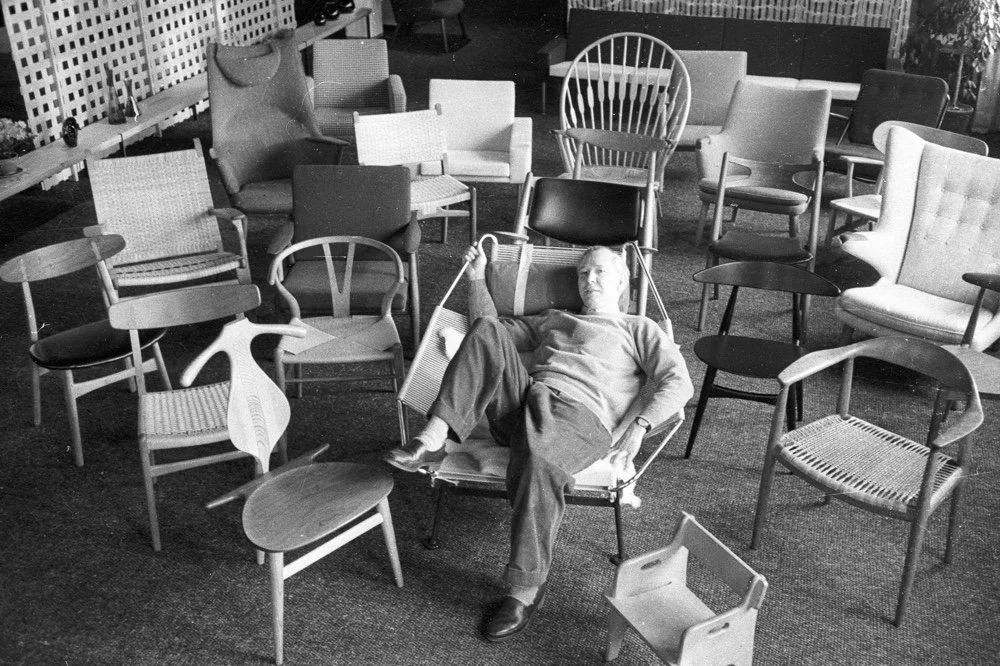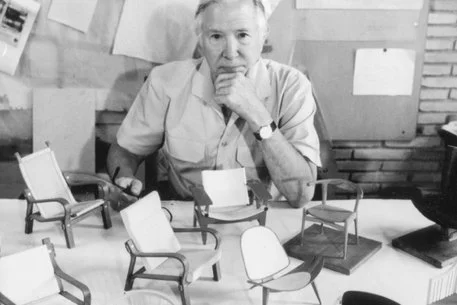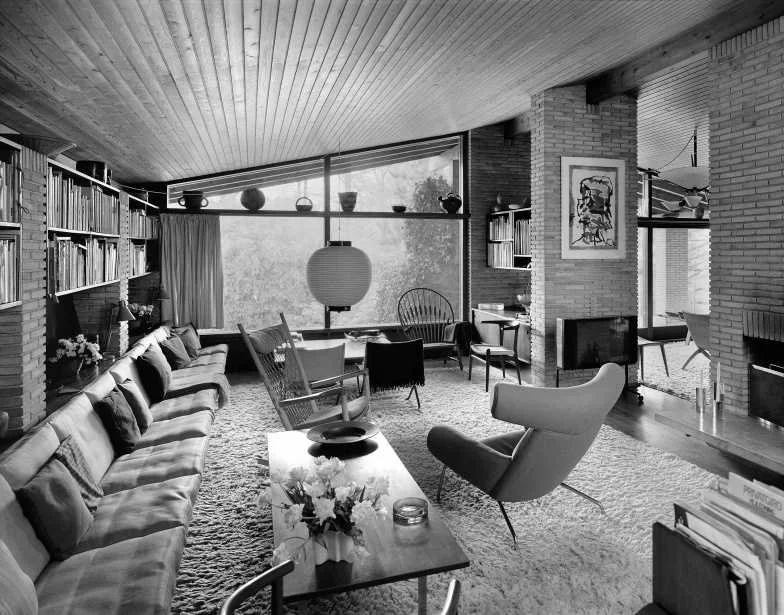Hans J. Wegner
Hans Jørgensen Wegner, (April 2, 1914 – January 26, 2007), was a world renowned Danish furniture designer. His high quality and thoughtful work, along with a concerted effort from several of his manufacturers, contributed to the international popularity of mid-century Danish design. His style is often described as Organic Functionality, with emphasis on functionality. This school of thought arose primarily in Scandinavian countries with contributions by Poul Henningsen, Alvar Aalto and Arne Jacobsen. In his lifetime, he designed over 500 different chairs, over 100 of which were put into mass production and many of which have become recognizable design icons.
Wegner received several major design prizes, from the Lunning prize in 1951 and the Grand Prix of the Milan Triennale in the same year, to the Prince Eugen medal in Sweden and the Danish Eckersberg medal. In 1959, he was made honorary Royal designer for industry by the Royal Society of Arts in London. His furniture is present in multiple international collection including the Museum of Modern Art (Moma) in N.Y. and the Die Neue Sammlung in Munich.
“The Chair”, 1949. The Chair best represents Wegner’s design philosophy of “continuous purification, to cut down to the simplest possible elements of four legs, a seat, and a combined top rail and armrest”. The Chair was a collaboration of Wegner and furniture maker Johannes Hansen (now made by PP Mobler as models PP501/PP503). The construction features 11 pieces of wood joined by 12 mortise and tenons and two large finger joints. The finger joints orient the wood grain as the back rail wraps around the body to maximize material strength. The Chair was offered with a solid upholstered seat, or a seat of airy woven caning. It rose to prominence in the 1961 televised debate between Richard Nixon and John F. Kennedy. Both presidential candidates sat in The Chair during the debate.
The Wishbone Chair, 1949. The Wishbone chair was the first collaboration between Wegner and maker Carl Hansen, who has produced it since 1950. In 1944 Wegner began a series of chairs inspired by a portrait of Danish merchants sitting in traditional Ming chairs. The Wishbone chair is the last and most distinct of the series. The inspiration is clearly visible, but the chair is an original form. The back legs are steam-bent into a curve that tapers to join a circular steam-bent back rail. The joinery was difficult but resulted in a strong, lightweight chair.
Ox Chair,1960. which came with or without horns, showed the less serious side of Wegner’s designs. “We must take care,” he once said, “that everything doesn’t get so dreadfully serious. We must play–but we must play seriously.” The Ox was Wegner’s favorite chair and occupied a space in his living room until he died.
Wegner’s home.
“The chair does not exist. The good chair is a task one is never completely done with.” – Wegner.
Hans J. Wegner is definitely one of our inspirations, to inspire us to do the real thing and to share beautiful original design with values in craftsmanship and authenticity. Drop in at our space and check out some of the original Hans Wegner pieces we have.
Text and images from Design Museum Danmark.








